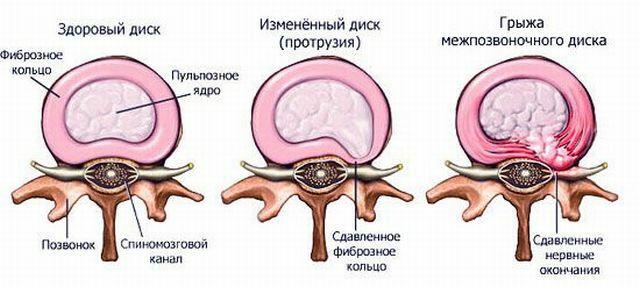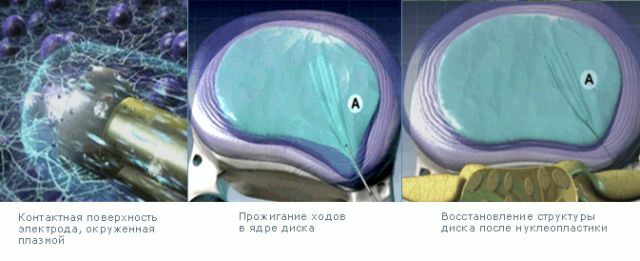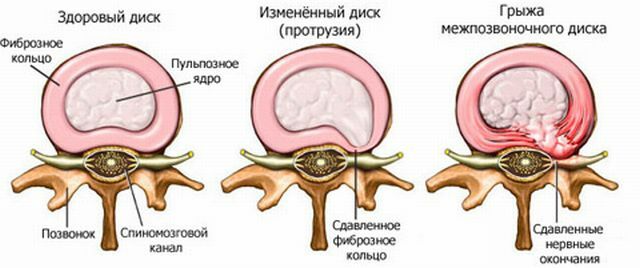1 Statistics and etiology
For a better understanding of the nature of the pathology, it is not superfluous to know what the diaphragm is and how it is related to the digestive organs. The diaphragm is an unpaired transversal stripe( elastic, elastic tissue, capable of contracting when exposed to impulses from the nervous system) by the muscle. Thanks to this muscle, the lungs are able to expand, and the human body is divided into the thoracic and abdominal cavity. To denote the boundaries of the diaphragm, use the lower edge of the ribs.
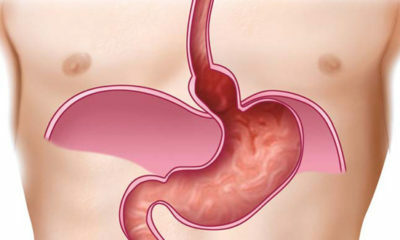
We recommend you to read
- Treatment of inguinal hernia in men without surgery
- What is axial hiatal hernia
- Symptoms and treatment of hernia of the esophagus of the diaphragm
- Effective remedy for gastritis and stomach ulcer
Essentially, the axial hernia of the esophagus is a defect that occurred in the diaphragm, which affectson the esophagus and stomach. Since the diaphragm is a muscle and consists of fibers, the main factor that ensures the normal functioning of this organ is expressed by the elasticity and flexibility of the muscle fibers. Unfortunately, over time, muscle fibers become less flexible and elastic. Therefore, the axial hernia of the esophagus is classified as a group of age-related diseases. Accordingly, this pathology in the overwhelming majority occurs in adults.
Statistics show that the axial hernia of the diaphragm occurs in about 5% of adults around the world. Women get such a hernia more often than men, and in children it is usually congenital. If we consider the frequency of this pathology among all cases of diaphragmatic hernias, then it happens in 90% of cases, that is, more often than the diaphragmatic hernia of the bladder, small or large intestine, etc. But among the pathologies of the digestive organs, the axial hernia takes the third place,sometimes even ahead of even peptic ulcer and cholecystitis.
-
 IMPORTANT TO KNOW! Gastritis? Ulcer? To have a stomach ulcer not turned into cancer, drink a glass. ..Read the article & gt; & gt;
IMPORTANT TO KNOW! Gastritis? Ulcer? To have a stomach ulcer not turned into cancer, drink a glass. ..Read the article & gt; & gt;
In the diaphragm there are 3 holes that allow the organs located between the chest and abdomen to communicate with each other. Thus, in the diaphragm, the apertures for the esophagus, the aorta and the hollow vein are distinguished. Pathology occurs when, due to the lost flexibility and elasticity of the diaphragmatic muscles, the esophageal opening widens and becomes much larger in diameter than the diameter of the esophagus. The elasticity and flexibility of the diaphragmatic muscles can be disturbed not only with age, but also for a number of other reasons. These include:
- Hereditary factor. In rare cases, a defect in the esophagus is transmitted from the parents to the child.
- GERB( gastroesophageal reflux disease).This fairly common pathology leads to a shortening of the esophagus due to the inflammatory process and the formation of scars in the wall of the esophagus.
- Diseases of the pancreas and liver for a long time, their chronic forms. High intra-abdominal pressure. This phenomenon can be the result of constant flatulence( excessive gas formation and swelling), constipation, overeating, lifting weights.
- Dysfunction of the motility of the stomach and duodenum.
- Diseases of the respiratory system, manifestation of which is a constant agonizing cough.
- Pregnant women. During pregnancy, the enlarged uterus exerts excessive pressure on the diaphragm. Sometimes the pathology develops only after severe childbirth, and not during pregnancy.
- Obesity is also accompanied by an excessive load on the diaphragm. In addition, in obese people, the stomach is many times larger than before weight gain.
- Mechanical damage to the diaphragm: fracture of the ribs, etc.
-
 Gastroenterologist. IMPORTANT: "I beg you, if you began to worry about abdominal pain, heartburn, nausea, do not do gas in any way. .."Read more & gt; & gt;
Gastroenterologist. IMPORTANT: "I beg you, if you began to worry about abdominal pain, heartburn, nausea, do not do gas in any way. .."Read more & gt; & gt;
2 Symptomatic manifestations of
About half of patients for a long time do not suspect the presence of axial hernia. This is due to the fact that manifestations( protrusions) typical for a hernia are not visible, since the hernia is localized inside the body. The pathological manifestations of axial hernia are similar to the symptomatology of the pathologies of the digestive tract. This is due to the fact that in the first case, and in the second there is a functional abnormality of the gastrointestinal tract. Symptoms are as follows:
- The occurrence of gastroesophageal catarrhal reflux is the transfer of the contents of the stomach into the cavity of the esophagus. Gastric juice has an acidic environment due to hydrochloric acid. For the walls of the esophagus this environment is aggressive and causes their irritation and inflammation. This phenomenon a person feels the appearance of heartburn( burning sensation in the sternum) after eating. Heartburn intensifies during physical exertion, when the patient takes a recumbent position. The patient can feel a lump in the throat.
- Pain syndrome also occurs after eating. It can be felt in the sternum, neck, shoulder, lower jaw, heart. Pain with such a localization also occurs with diseases of the cardiovascular system - angina pectoris. Therefore, the correct diagnosis is important. Sometimes the pain syndrome occurs only after a horizontal or other position. The patient may experience the presence of a foreign body in the upper abdomen and a swelling.
- Hiccups, which is manifested involuntary convulsive contractions of the diaphragm. It causes irritation of the nerve of the diaphragm, which arises from the resulting hernial sac. Often hiccups last a long time, occurs after eating.
- Belching, which occurs due to the penetration during the meal of air into the stomach. In humans without a hernia and other pathologies of the gastrointestinal tract, there is a gradual release of air through the mouth. With axial hernia, the pressure of the stomach is increased, this is manifested by raspiranie in the area of the substrate and leads to an intensified and rapid release of air from the stomach, accompanied by a characteristic sound.
- Dysphagia is a process of swallowing. When dysphagia is harder to swallow liquid food, especially if it is cold or very hot, or the patient eats too fast.
- Bleeding is a complication of a hernia. Violation of the integrity of the vessels of the esophagus and bleeding occurs. It is not detected immediately, which is dangerous for human health. To determine the presence of bleeding allows progressive anemia.
- Perforation of the esophagus is a serious complication, manifested by a violation of the integrity of the esophageal wall. As a rule, such complication is possible if the hernia is entrapped by the walls of the esophageal opening.
- Ulcerous lesions of the esophageal mucosa.
ADVICE FROM THE MAIN GASTROENTEROLOGIST
Korotov SV: "I can recommend only one remedy for the rapid treatment of Ulcer and Gastritis, which is now recommended by the Ministry of Health. .." Read testimonials & gt; & gt;
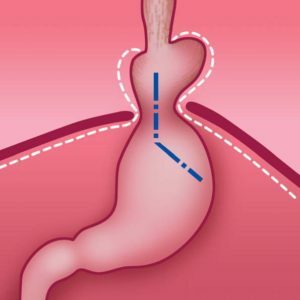
3 Methods of treatment
Combined therapy is used to treat axial hernia of the esophagus. For the beginning appoint medicines, which facilitate the manifestations of the disease( heartburn, eructation, flatulence).The positive effect is produced by drugs that lower the pH of the stomach, with a view to less damage to the walls of the esophagus.
A certain diet will ease the symptoms. It is important not to eat foods that do not cause secretion of gastric juice: sharp and fatty foods, chocolate, coffee, alcohol, etc. You need to eat a little and often. It helps to avoid complications and reduce the severity of the symptoms of the absence of excessive physical exertion and lifting of heavy objects.
It is important to understand and know that drug therapy and diet compliance give temporary relief without eliminating the cause of the disease. Therefore, almost always with an axial hernia, a surgical operation is prescribed. Currently, two methods of surgical intervention are used in surgical practice: open access - Nissen fundoplication, less used due to a large number of complications, and Toupe plastic, which is often used, since it has fewer complications;Laparoscopic access is an operation with less trauma to healthy tissues and a quick rehabilitation process.
- 1 Statistics and etiology
- 2 Symptomatic manifestations
- 3 Treatment methods
Axial hernia is a pathological process in the digestive organs, accompanied by protrusion of the esophagus and displacement of the stomach into the breast cavity through the aperture in the diaphragm, intended for the esophagus. With this process, not the entire esophagus is protruded, but only its lower part;not the whole stomach is displaced, but only some part of it( porter, bottom, etc.).If we take into account the etiology( cause) of such a hernia and the organs in which pathology occurs, the full name of the disease will sound like "axial hernia of the esophagus of the diaphragm."
Do you have gastritis?
GALINA SAVINA: "How easy is it to cure gastritis at home for 1 month. A proven method - write down a recipe. ..!"Read more & gt; & gt;
In addition, this hernia is called a "sliding hernia".This name she received for the fact that one of the walls of the hernial sac is formed by an organ that is covered with the peritoneum( a thin serous membrane covering the walls of the abdominal cavity and some organs in it), and protrusion is formed due to the slipping of the organ from its usual location.

